Air and Space Museum Field Trip
2/23/25 11:00 am Washington D.C
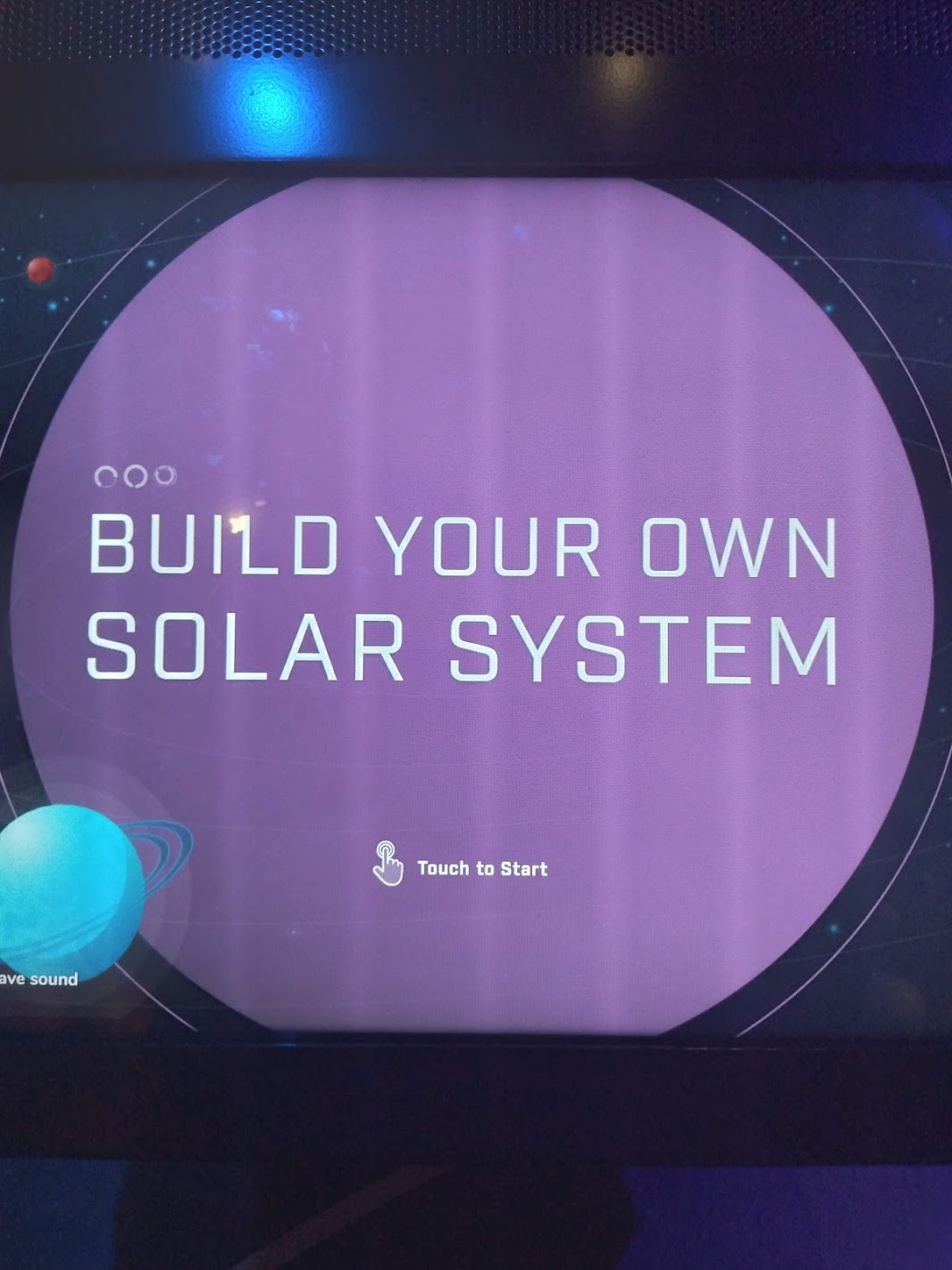
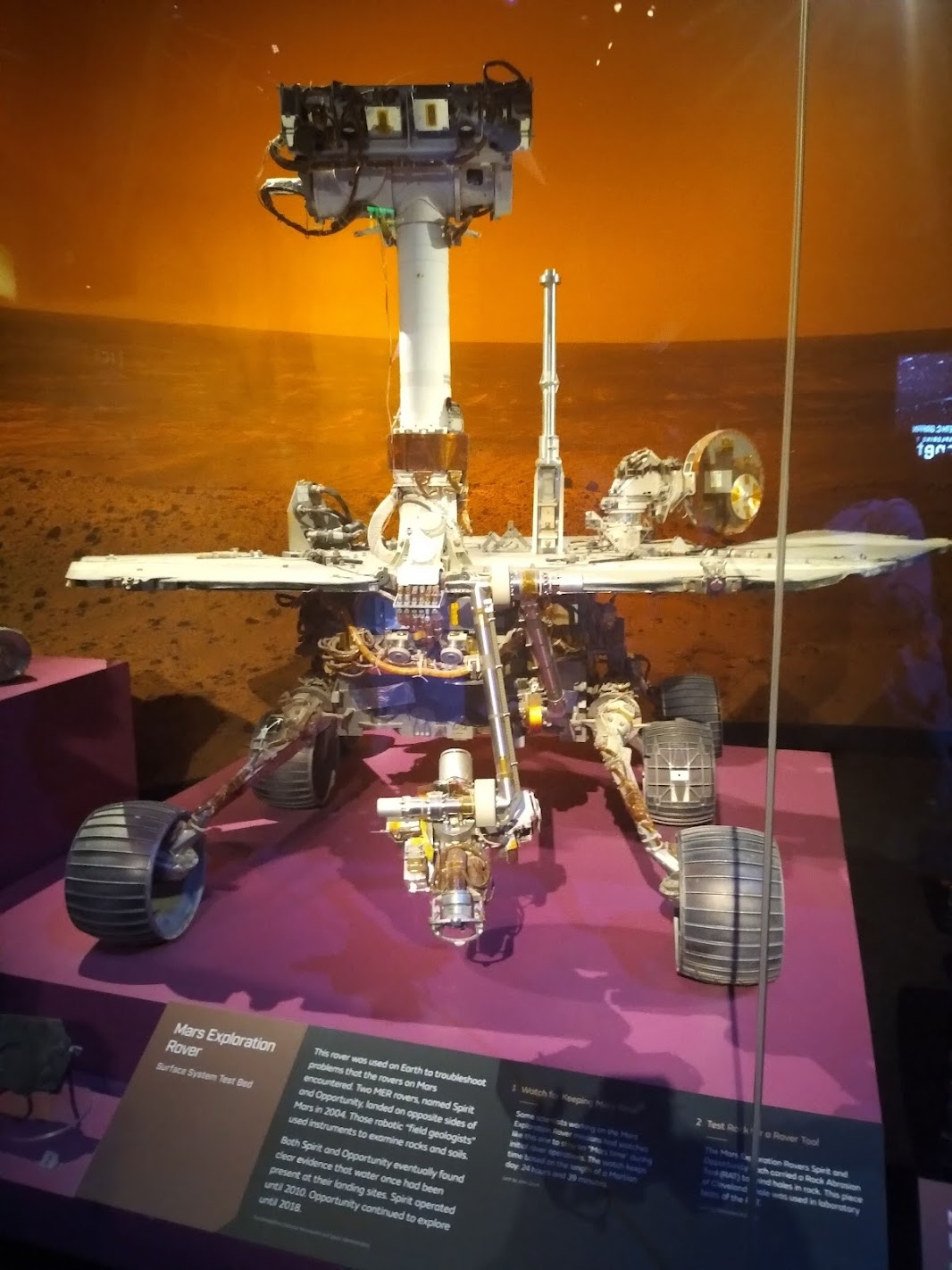
The Exploring the Planets exhibit provides general and specific information about the solar system. I learned about the different types of plants (Rocky, icy, gas giants) and the moons that orbit them. This includes rocky planets, icy planets, and gas giants. The name “planet” means “wanderer” because that’s how early people described planets. The official definition of a planet is: an object that orbits the Sun, has enough gravity to maintain a round shape, and has a strong enough gravitational pull to cause neighboring objects to crash into it. Pluto doesn’t fit the last criteria, so it’s not considered a standard planet. Throughout the exhibit, I learned more about the scientists (Jane Luu) who discovered that Pluto isn't a regular planet. This is important because it's part of the Kuiper belt, a region of icy bodies. Learning about Pluto and other bodies in the Kuiper belt can't tell us more about the beginning of the solar system. I also learned about the various Mars rovers that helped examine rock and soil samples on Mars. These are important because they help scientists figure out if life exists on Mars and if it’s hospitable for humans. Finally, I explored the exhibit answering the question: Can humans live anywhere else in the solar system? The requirements are protection from radiation, the right amount of gravity, and resources such as water and oxygen. This gallery conveyed relevant information through big screen displays, videos, and 3D models of planets, moons, and rovers. I think this exhibit is aimed towards children and teenagers. The language used is simple and easy to understand. The interactive components are also great for kids and effective at conveying information. My favorites were the touchscreen games. I played one where I built my own solar system and got to learn about how planets can crash into each other and move out of orbit. I also liked the Mars rover game where the rovers were in constant connection with scientists on Earth.
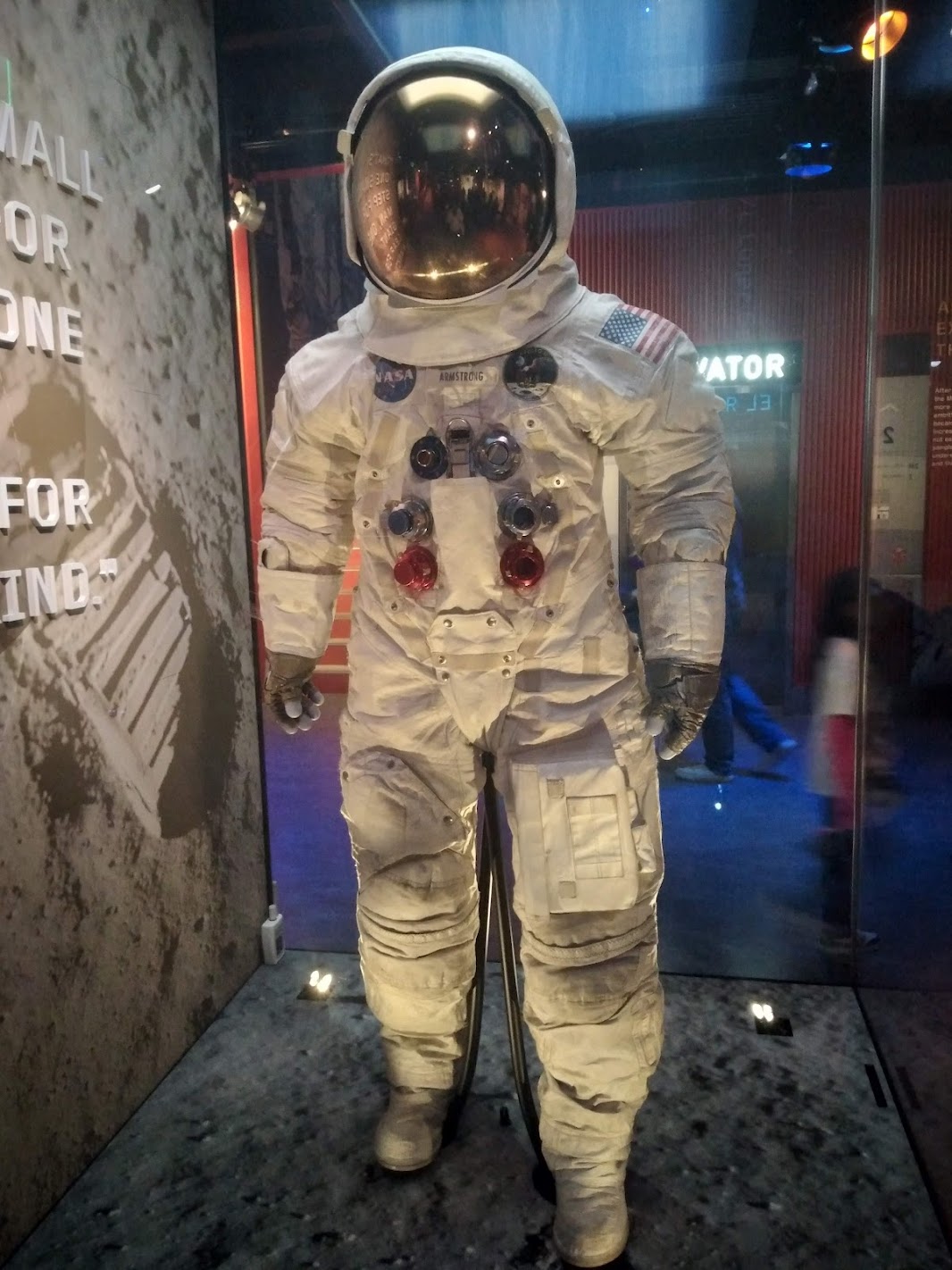
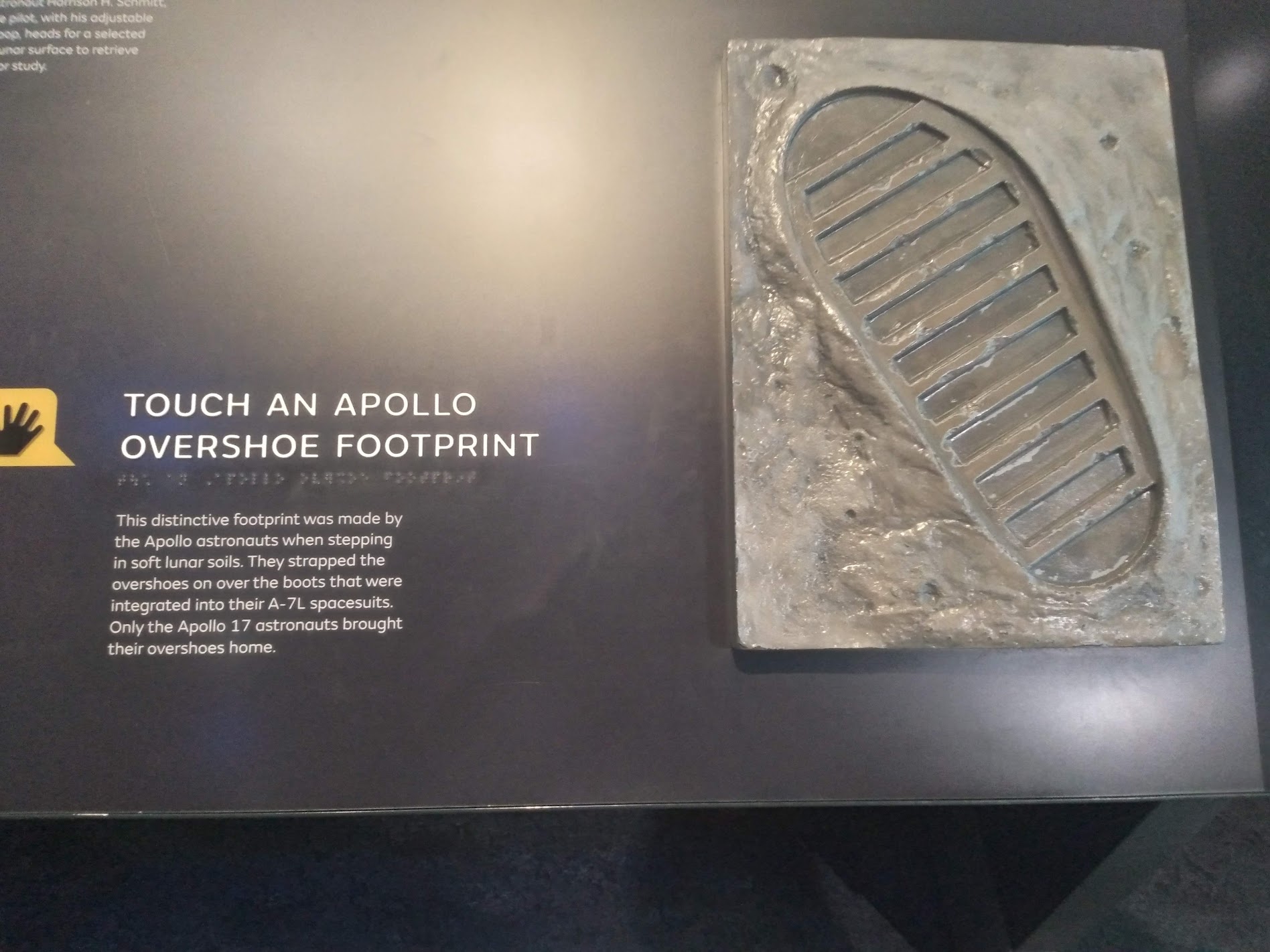
The Destination Moon exhibit is primarily about the history of the moon. It covers mainly the moon landings and astronauts. In older centuries, there were imaginary moon flights and people created myths of how we would get there and what we would find on the moon. The race between the Soviet Union and America also heavily influenced the launch of satellites and spacecrafts to the moon. This exhibit also explores tragedies such as Apollo 1 and methods astronauts used to collect lunar samples. Other concepts and discoveries portrayed include the invention of the telescope, which made it possible to see the details of the moon clearly. Additionally, I learned about the first spacesuit on the moon and the man (Neil Armstrong) who wore it. It was like a spacecraft in a bodysuit because it protected him from temperature extremes, radiation, and particles. It also provided him air to breathe. Finally, I learned about why we stopped doing missions to the moon. After we “beat” the Soviets, people didn't see a need to continue these explorations that required substantial amounts of money. We had other issues such as the Vietnam War that also needed attention. The information in this exhibit is conveyed through 3D models, text files, audio, and video displays. The largest video screen played a timeline of the 1960s-1980s focused on moon-related events and other current events such as the Civil Rights Movement, the Beatles, and Mary Poppins. There are many of the original parts of space ships and satellites on display so people can see the size and comparisons. I think this hall is aimed at a slightly older audience because they can relate more to the time period. This exhibit doesn't have as many interacting components. It's nice seeing the models and hearing transcripts from Aldrin and Armstrong, but they could use more games and computers where visitors explore spaceships and the moon.
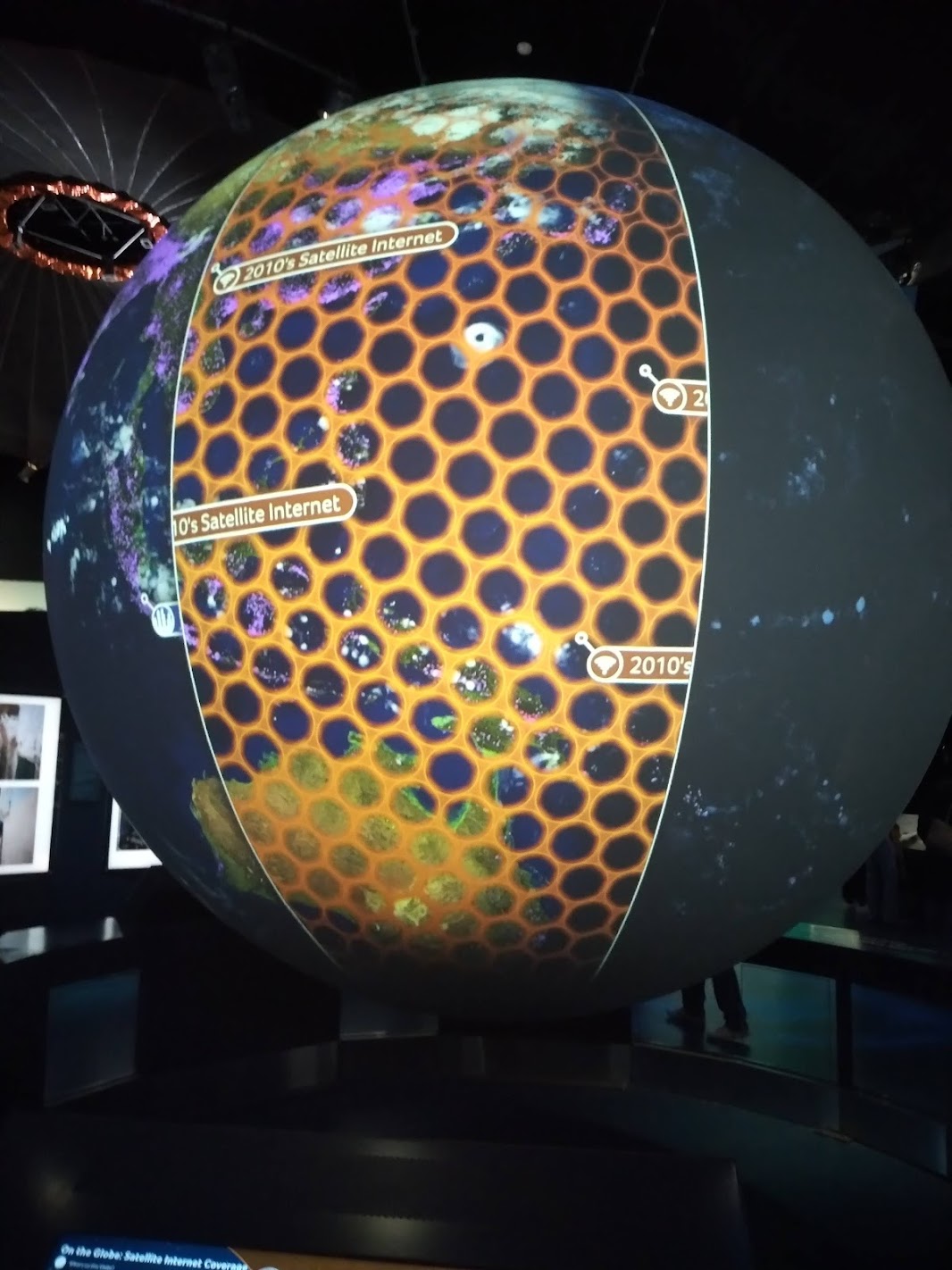
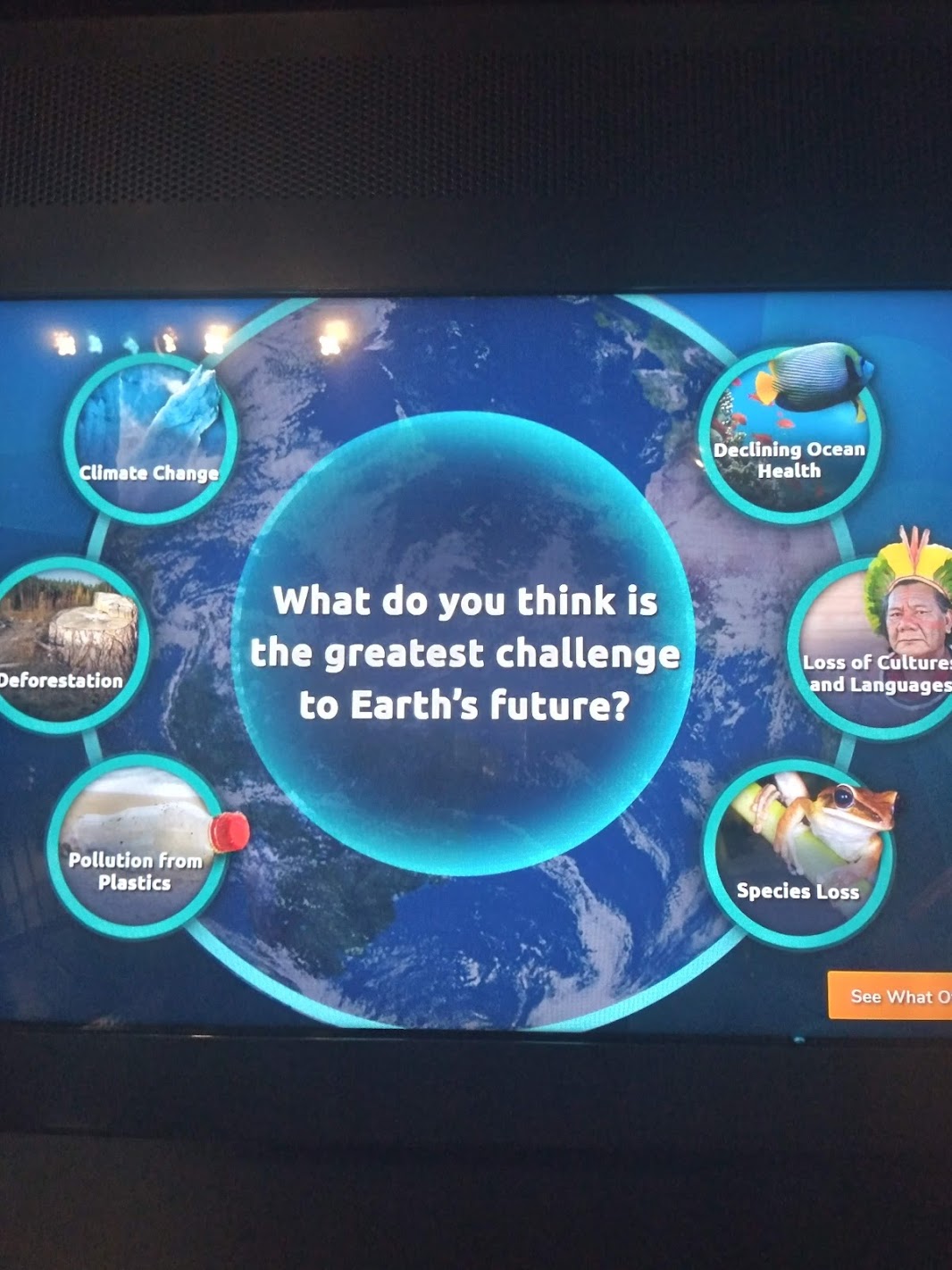
The One World Connected exhibit is more about how the future, technology, and aviation connect all of us across the globe. Satellites in particular help connect everyone. Before satellites, local areas had good coverage but broad areas couldn't connect with each other. The undersea telegraph cables and radios that were used had limits. Satellites positioned in high orbits allowed people in distant places to send and receive signals. They were also used for spying. Another discovery was the ability to finally see what Earth looked like from space. Finally, I learned about how satellites link climate change and carbon dioxide patterns through atmospheric conditions. Satellites are also used to track endangered species that have been tagged with trackers so we can analyze their migration patterns. This gallery conveyed relevant information through real satellite and radio models. The interactive components were also great at expressing how people from around the world view important problems. The main display took responses from visitors about what they think the biggest challenge is (climate change, deforestation, etc). It groups responses by continent of origin and age group and displays the results on a big screen. I think this exhibit is suitable for all age groups because this topic can appeal to a wide range of people.











